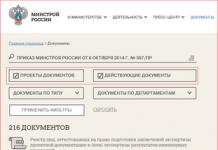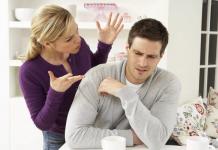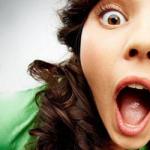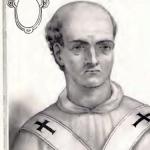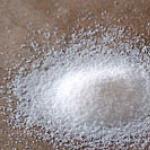Black stone of Kaaba
It is the most famous stone (presumably of meteorite origin) and is considered the most sacred treasure in Islam. Muslims believe that he is the petrified guardian angel of Adam, who, along with the first people, was expelled from Paradise for not protecting them from temptations and violations of the Divine prohibition. Fans of Islam also believe that when the Day of Judgment comes, the Black Stone will again turn into an angel. He is called to tell Allah about those people who sacredly fulfilled their duties, strictly observed Muslim rituals, that is, led a righteous life and are worthy of Paradise.
On the eve of Kurban Bayram, one of the main Muslim holidays, millions of believers from around the world make a pilgrimage (Hajj) to the Kaaba in Mecca. The Kaaba (Arabic - “cube”) is the “Holy House” towards which devout Muslims turn during prayer five times a day. This house is located in the center of the main mosque of Mecca (Al-Masjid al-Haram, or al-Masaj al-Haram, which means "The Holy Mosque" in Arabic) and is a cube-shaped stone building with a base of 12 m by 10 m and 15 m high. In its north-eastern corner at a height of 1.5 m is mounted a Black Stone bordered with a silver rim (al-Hajar al-Eswad) - the main object of worship, a symbol of the power of Allah. The visible surface of the stone is approximately 16.5 by 20 cm. According to legend (which was recorded 200 years before Muhammad), this paradise stone (white yacht) was given by God and brought by the angel Jabrail to Adam after his repentance. He later became black from numerous human vices.
The Kaaba is surrounded by a paved path along which pilgrims walk around seven times and kiss the Black Stone or at least touch it, thus relieving themselves of all sins. Near the corner of the building where the main shrine of Muslims is built, during the Hajj there are police officers, chained to the wall with soft belts so that they are not carried away by the human whirlpool.
Nowadays, the sacred relic is a smooth surface with several stripes and small inclusions of crystals. It is considered by many scientists to be a meteorite, although the stone probably cannot be an iron meteorite, given its cracks; nor a stone meteorite, since it floats in water.
Meteorites have been worshiped as gods at different times. For example, in Ancient Egypt, meteorites were lowered into the grave with the deceased as a pass to heaven. A necklace made of iron meteorites was found in one of the Egyptian pyramids. The ancient Egyptians valued such iron at five times more than gold and 40 times more than silver. In the ancient Greek temple of Artemis, the conical shape of a large meteorite was the central idol. Fallen in 1200 BC. e. The ancient Greeks called the “heavenly gift” “God’s house” and placed it in the temple in Orchomen (Arcadia). The ancient Hebrews called meteorites the "abodes of God" and performed circumcision with meteorite knives made from meteorite iron. An iron “gift” weighing more than 1.5 tons, wrapped in coarse cloth, was discovered by scientists in a labyrinthine ancient temple in Mexico. 400 BC e. A meteorite fell in Syria, which was called “Ellagabal” (in Assyrian “Ella” - God, “gabal” - Creator) and was revered as a symbol of the Sun. Several centuries later he was transported to Rome, where the Temple of Meteor was built for him, and the Roman emperor became the high priest of this temple. In II–III centuries. BC e. There were already more than 30 temples with meteorites in the Mediterranean. The Indians believed that a piece of metal weighing 742 kg that fell from the sky in central Texas was capable of healing people and made periodic pilgrimages to it. In 1853, a meteorite that fell in eastern Africa near Zanzibar was proclaimed a god by the Huanika tribe. And Christians at the sites of meteorite falls, which were called “Christ’s stones,” held prayer services, held processions of the cross, and built funeral chapels. Interestingly, St. Peter's Cathedral in Rome was built on the site where the meteorite temple used to be.
On August 14, 1992, dozens of rocks fell from the sky onto the African city of Mbale in Uganda. Local residents collected some meteorites and took the powder from them as medicine. They believed that the stones were sent by God to rid people of AIDS.
In 1980, scientists suggested that the Black Stone was of impact nature (molten sand mixed with meteorite matter), it was taken from the Wabar crater, located 1080 km east of Mecca. Thus, the sacred relic of Islam is a frozen porous glass, so it is quite hard and fragile, and can float in water: it has inclusions of white glass (crystals) and grains of sand (stripes). Opponents of this theory say that, judging by some measurements, the age of the crater at Wabar is only a few centuries old, although there are legends that claim that the meteorite crater is between five and nine thousand years old. The energy released during the fall of the “heavenly gift” was equivalent to a nuclear explosion with a power of about 12 kilotons, i.e. it was comparable to the explosion in Hiroshima. True, this was not the most powerful of all the blows that shook our planet during its existence.
According to Arab legend, Adam and Havva (Eve) were not only expelled from paradise, but also separated: Adam ended up on the island of Ceylon, and Havva on the Red Sea coast, in the area where the port of Jeddah is now located. They met only two centuries later in the Mecca area and at Mount Arafat they first knew each other after such a long separation. Adam suffered greatly because he lost the temple in which he was accustomed to pray in paradise. God had mercy, and a copy of the temple was lowered to earth in the desert near the current source of fresh water Zamzam. After the death of Adam, this temple not made by hands was allegedly carried back to heaven.
Having buried his mother Hajar (biblical - Hagar), Ibrahiim (Abraham - he is considered the common ancestor of Arabs and Jews) began to spend a long time visiting the vicinity of Mecca. On one of his visits, on the very spot where the temple of Adam had once been located, Ibrahim, together with his son Ismail, built a temple, which is now known as the Kaaba. For its construction, stones were taken from five sacred mountains: Sinai, Lebanon, Olivet (the Mount of Olives according to the Bible), Judi (on which, according to the Koran, Noah’s Ark landed) and Hira (where the Prophet Muhammad subsequently received his first revelation and was called to prophetic service ).
When the building was almost ready, Ibrahim needed a noticeable stone to mark on the wall the place from which to begin the ritual circumambulation of the Kaaba. In paradise, angels and Adam, taught by the Almighty, circled the temple seven times, and Ibrahiim wanted the worship to take place on Earth in the same way. It was then that the angel Jibriel (biblical - Archangel Gabriel) brought him the famous Black Stone, which was embedded in the north-eastern corner of the building.
Believers consider the Kaaba to be the first temple of the Almighty on earth, which was created by human hands long before the emergence of Islam. During the Great Flood, legend says, the temple was lifted into the air and then destroyed. Then God commanded Ibrahim and Ismail to find the foundation of the temple that had disappeared under the sands and build a new one. According to legend, to facilitate the construction of the Kaaba, the angel Gabriel brought Ibrahim a flat stone that could hang in the air and serve as scaffolding. This stone, on which the imprint of Ibrahiim’s foot is preserved, is also sacred to Muslims and is called “Makam Ibrahiim” (“place of standing of Ibrahiim”). It is located a few meters from the Kaaba, opposite the entrance to the sanctuary.
As history shows, the Kaaba served as the center of worship for the Arabs in the pre-Islamic pagan era. From the eldest son Ismail, the “management” of the temple passed to the South Arab tribe of the Jurhumits, who enjoyed the support of the Babylonians. In III Art. n. e. they were supplanted by another tribe - the Khuzaites. The Jurhumits, leaving Mecca, destroyed the Kaaba and filled up the Zamzam source of fresh water, and the Khuzaites cleared the source and restored the temple. Then, in addition to the Black Stone, 360 idols were concentrated here, among which there were also images of Abraham and the Virgin Mary with the baby Jesus. In 630, after 23 years of calls, the founder of the faith, Prophet Mohammed, having captured Mecca, finally cleared the temple of idols, but respectfully touched the Black Stone with his staff, preserved all the rituals of the Hajj, and believers began to worship one God - Allah.
Today, the Kaaba is covered with a black silk blanket called a kiswa. The blanket is changed annually and irrigated with rose water. The old kiswa is cut into pieces and sold to pilgrims. Many people keep pieces of the bedspread as sacred relics. The right to wear the Kaaba is considered the greatest honor, which has been disputed by successors and great people since ancient times.
The upper part of the bedspread is decorated with sayings from the Koran (suras) embroidered in gold and silver. They also decorate the veil that covers the door to the Kaaba, which rises about two meters above the ground and is made of pure gold (its weight is 286 kg). During the visit and cleansing of the insides of the Kaaba, a ladder is placed at the door. Inside there are three columns, numerous lamps painted with enamel hang, and copies of the Koran are stored.
A gilded water drain protrudes from the roof of the northwestern wall of the Kaaba. The part of the Kaaba between it and the western corner is considered the qibla itself. At the north-eastern wall, a semicircular wall encloses al-hijr - a special place where pilgrims do not enter during a circumambulation (tawaf) around the Kaaba: it is believed that under the Prophet Ibrahiim it was supposedly part of the Kaaba and there, according to legend, Ibrahiim’s son Ismail and his mother Hadjar.
The sacred Haram Mosque, sometimes also called the Forbidden Mosque, is built around the Kaaba. The construction of the first mosque on this site dates back to 638, and the current mosque has been known since 1570. The last time it was reconstructed was in the late 1980s, when a huge building with two minarets was added to it on the southwestern side.
At one time, many different buildings and structures appeared near the mosque. There were also departments of the main Muslim religious and legal schools, destroyed during major renovation work in the 1950s - 1960s, carried out by the Saudi rulers. In 1980, the Kaaba and the Al-Masjid al-Haram mosque were seized by a group of religious fanatics who encroached on the Black Stone. Two weeks later, the troublemakers were destroyed by Saudi troops, who stormed the shrine.
It is interesting to note that back in 930, the Black Stone was stolen by the Qarmatians who settled in Bahrain, and only 21 years later it was found, having first been convinced of its authenticity by its property of not drowning in water. And in 1050, the mad Egyptian caliph sent a man to destroy the relic. The Kaaba burned twice, and in 1626 it was flooded. After all these misfortunes, the stone split into 15 pieces, which are now held together with cement mortar and enclosed in a silver frame.
The black stone is the mystery of the Kaaba temple. Some researchers consider it, like all meteorites, to be an energy “battery” with a very high level of energy, sent by Higher powers to Earth for “safety net”. Muslims believe that on the Day of Judgment the Black Stone will turn back into white pearl.
From the book Great Soviet Encyclopedia (GO) by the author TSB From the book Great Soviet Encyclopedia (KA) by the author TSB From the book Great Soviet Encyclopedia (KO) by the author TSB From the book Russian Mythology. Encyclopedia author Madlevskaya E L From the book Dictionary of Slavic Mythology author Mudrova Irina Anatolyevna From the book Here Was Rome. Modern walks through the ancient city author Sonkin Viktor Valentinovich From the book Geographical Discoveries author Khvorostukhina Svetlana AlexandrovnaStone Stone, like earth, water, air, fire, is one of the primary elements of the world. From numerous written sources, legends, and mythological stories, it is known that the Slavic peoples have long had a veneration for stones, especially those that were distinguished
From the author's bookAgate stone Since ancient times, people have known the healing properties of stones. In the 16th–17th centuries, collections appeared that described these properties of stones, as well as herbs, trees and everything that surrounded a person. These ancient “Healing Books” included the experience of many generations
From the author's bookAlatyr-stone A magic stone that is located on the island of Buyan. Its epithet is “white-flammable stone”; it is believed that it is endowed with the most wonderful properties. It is white in color and huge in size. “Alatyr is the stone of all stones, the father of all stones!” As the legends say, he fell
From the author's bookDiamond-stone As a healer, diamond is good for the eyes, it improves vision and gives unusual vigilance, clears the mind of excessive care and anxiety, increasing its sensitivity to important subjects of life, heals the liver, bile ducts, and skin diseases. At the same time, it must be worn
From the author's bookAmethyst stone It promotes healing from burns, gives infertile children, restores spiritual harmony and balance, activates mental abilities, increases and enhances the strength of the owner. This stone in skillful hands turns into a salvation from gout. Water, in
From the author's bookSerpentine stone Significantly increases the body's strength and serves as a powerful antidote. With the ability to communicate with a stone, it warns the owner about approaching diseases: it seems to change its heat capacity (although in reality this does not happen!), becomes warmer in the hands,
From the author's bookFlint-stone has long been considered capable of getting rid of very serious diseases, such as erysipelas, tuberculosis, leprosy, goiter, encephalitis, helps restore bones, and restores mineral balance in the human body. Energy-rich flint water
From the author's bookMagnet stone If a husband carries this stone with him, he is nice to his wife, if his wife wears it, he gives the same to her. By this stone you can learn about the fidelity or infidelity of spouses. It should be placed at the head of a wife who is faithful to her husband - and through her husband’s sleep
From the author's bookThe Black Stone Forum finally became the domain of archaeologists at the end of the 19th century, and since then this situation has remained virtually unchanged. In 1899, slabs of black marble were excavated in front of the curia, and under them were several monuments from different times: a U-shaped altar, a small pedestal,
From the author's bookBehind the Stone The first message about the transition of the Novgorodians to the eastern slope of the Urals, and then to Siberia, appeared in the Novgorod Chronicle around 1364. Having crossed the Urals, the travelers reached the Ob River and reached the Arctic Ocean. This northern route from Novgorod was
Unlike other eastern cities, Mecca was not surrounded by a wall, and its natural fence was always mountains. The wide Massai Street stretches across the entire city, towards which houses, large and small, slide down from the mountains in numerous tiers.
In the middle of the street, at the very bottom of the valley, is a square where the famous Haram al-Sherif mosque, which means “House of God,” stands. Muslims are sure that it is in this place that the center of the universe is located, because it is not even the earth, but a part of the sky overturned onto the earth. And on the last day of the world’s existence she will return to heaven.
The territory of the “Forbidden Mosque” is a sacred place for Muslims all over the world. This is stated many times in the second sura of the Koran: “And wherever you come from, turn your face towards the Forbidden Mosque; and wherever you are, turn your faces towards her.”
The square is similar to a traditional oriental courtyard, only very large. It is surrounded in three, and sometimes in four rows, by columns made of marble, granite and ordinary stone. At the top, the columns are connected by pointed arches and covered with small white domes, and seven slender minarets rise above them.
But why is Mecca considered the qibla - the side where the Muslim prayer should be directed and the mihrab - the sacred niche in the mosque, wherever this mosque is located? After all, it would seem that prayer to Allah should ascend to heaven.
Even the ancient Arabs turned their attention to Mecca, because their pagan gods were also in the Kaaba. This temple was a true pantheon of gods and could satisfy all needs. It contained about 360 different idols and sculptural images of deified persons. Among them are the Arab gods Ilat, Uzza, Hubal and others; Assyro-Babylonian Marduk, Assor, Sin, Samas and Astarte; Jewish Patriarch Abraham and the Virgin Mary with the Christ Child in their arms.
According to Arab legends, the Kaaba was erected as an altar for prayer by the progenitor of people, Adam. Adam suffered greatly from the fact that he lost not only paradise, but also the temple in which he was accustomed to pray in paradise. Then God had mercy, and a copy of the temple was lowered to earth.
To make it easier to build the Kaaba, the angel Gabriel brought Ibrahim (Abraham) a flat stone that could hang in the air and serve as scaffolding. This stone is still in the Kaaba, and believers can see the footprints of their forefather on it.
In the center of the square there is a large stone cube about thirteen meters high with a flat roof. This is the Kaaba, once a pagan sanctuary, and now the main temple of the Muslim world.
There are no windows in the Kaaba, and the door covered with silver sheets is raised from the ground to a height of approximately 120 centimeters, so the temple can only be accessed by a wooden staircase, which is specially rolled up during the Hajj.
From above, approximately three-quarters of its height, the Kaaba is covered with a kiswa - a black silk cloth sewn from eight pieces. Sayings from the Koran are embroidered on it in gold and silver letters. For a long time, this material was prepared in Egypt and sent to Mecca, and only one family has the right to embroider it, which passes it on from generation to generation.
The ruler of Kerb ibn Esed was the first to close the walls of the Kaaba as a form of special veneration. Under the Baghdad caliph Mamun, this coverlet was made of light-colored material and was changed three times a year. But in 1349, the Egyptian Caliph Salih Ismail began to send kiswah made of black cloth from Egypt, and this was done only once a year. Since then, this custom has been preserved to the present day.
On the eastern side of the Kaaba there is the Bab-e-shaiba gate. A pilgrim entering this gate on the right side finds himself next to Maqam el-Ibrahim (Ibrahim’s place) - a kiosk made of a thick bronze lattice, inside of which, in an iron chest covered with silk embroidered with gold, is the very stone that served as Ibrahim’s stage during the construction of the Kaaba. At the request of the builder, it could rise or fall.
When, according to legend, the construction of the Kaaba was almost completed, Ibrahim needed another noticeable stone to mark on the wall the place from which the ritual procession around the temple should begin. In paradise, Adam and the angels, taught by God himself, walked around the temple seven times, and Ibrahim wanted the worship on earth to take place correctly. That’s when the angel Gabriel brought him the famous Hedjer el-Eswad - the Black Stone.
According to one version, it was Adam’s guardian angel, turned to stone after allowing his charge to fall into sin. When the Black Stone was lowered from the sky, it was dazzling white and shone so much that it could be seen four days away from Mecca. But gradually, from human sins, he darkened and darkened until he completely turned black.
The nature of the Black Stone is still unknown. Some scientists consider it a very large meteorite, other researchers see it as a large piece of unknown volcanic rock, because rocky Arabia is replete with many extinct volcanoes.
When Mohammed returned from Medina to Mecca in 1630, he threw out all the pagan idols from the Kaaba, but respectfully touched the Black Stone with his staff. But even before Mohammed gave his sermon, Mecca decided to repair the badly dilapidated Kaaba. When it was necessary to move the Black Stone to another place, a dispute arose between the Koreish families as to which of them was most worthy of this sacred mission. And then Mohammed solved this problem very ingeniously: he spread his cloak on the floor of the Kaaba, put the Black Stone on it, and then the elders of all noble families lifted the cloak with the stone.
“According to legend,” wrote the Russian staff captain Davletshin, “in 929 the Black Stone was taken to Yemen, but in 951 it was returned to Mecca again.” Now the Black Stone, embedded in the Kaaba above the ground and just below human height, is encased in a massive silver frame. The visible part of the stone is about 36 centimeters in diameter.
Every Muslim must perform Hajj at least once in his life - visit Mecca. In past centuries, this was not an easy, troublesome, and sometimes even dangerous task. The Hajj was performed subject to sufficient funds to visit Mecca and to provide for the family until the pilgrim's return. If all the conditions are met, and the hajj is not performed, Sharia threatens the violator with a very heavy punishment in the next world, and those who neglect this duty are equated with unbelievers. On the contrary, those who performed the Hajj were promised complete remission of sins committed up to that time, and those who completed this pilgrimage proudly wore their white turbans - a sign of the Hajj.
In past times, everyone who came to Mecca had to find a matwaf - a guide who would provide the pilgrim not only with lodging and food, but would also ensure that he did not make mistakes in performing ritual rites and prayers. There are so many subtleties in the Hajj procedure that it is difficult for any Muslim (even the most devout) to cope with them on their own.
The Hajj is based on tawaf - walking around the Kaaba seven times. This procession symbolizes the divine order, according to which all beings are subordinate to a single center - the solar system, embodied in God. While circumambulating the Kaaba, pilgrims devoutly kiss the Black Stone, for they deeply believe that on the day of the Last Judgment it will speak and name before Allah the names of all the faithful who kissed it with pure lips.
Another ritual - "sai" - obliges pilgrims to run seven times (back and forth) along the main street of Mecca, which is more than 400 meters long. Sai is a repetition of the painful throwings of the Hajars across the hot desert in search of water.
On the eighth day of the Hajj, a huge procession heads from Mecca to Arafat Hill to listen to the imam's sermon and perform special prayers. Approaching the hill, all the pilgrims pray and constantly exclaim: “Lyabbaik!” (“I obey you!”). In the valley, at the foot of Arafat Hill, believers must spend the night, and only pilgrims who visit this hill receive the title of “Hajj”.
Probably every person who has visited the Hajj has seen the sacred Kaaba, which is located inside a mosque called “al-Haram” (Forbidden Mosque), and around which all pilgrims walk. And someone saw her in different pictures on the phone or on social networks.
Yes, this is the Kaaba, covered with black material, which many mistakenly believe to be one large stone. However, this is the holy Kaaba, the main shrine of Muslims. It is within its walls that the famous “al-Hajar al-aswad” is located.
Many Muslims, approaching the Kaaba, strive to kiss and hug it, and turn to Allah with a prayer in this state. But there is a special stone in the corner of the Kaaba, it is black and there is a silver circle around it, inside of which it is located, and from the touch of people it has already become like a hole in the corner of the shrine.
“Al-Hajar al-aswad” (The Black Stone) or “al-Hajar al-asaad” (the stone of happiness), as the Meccans like to say, is the most valuable stone in the world. And the side of the Kaaba in which this stone is located is the best and most worthy corner - “rukn al-Hajar al-aswad”. Therefore they kiss him, put their forehead on him, touch him with their hands in order to receive grace. It is located about one and a half meters from the ground in the corner of the Kaaba.
Who was the first to place the Black Stone in the wall of the Kaaba?
The first to build the Kaaba was Prophet Adam (peace be upon him). This is according to the opinion of Said ibn al-Musayyib, Ibn al-Jawzi, Ibn Hajar al-Asqalaniy. There are other opinions of scientists that the first to build the sacred Kaaba was Prophet Ibrahim (peace be upon him).
But the opinion that Prophet Adam (peace be upon him) was the first to build it is more probable, because Allah Almighty said in the Koran:
وَعَهِدْنا إِلى إِبْراهِيمَ وَ إِسْماعِيلَ أَنْ طَهِّرا بَيْتِيَ
Meaning: " And We entrusted Ibrahim and Ismail (the son of Ibrahim) to cleanse (from the idols that people worshiped besides Allah) My house (i.e. the sacred Kaaba) "(al-Baqarah, 125). That is, the Kaaba already existed before the birth of the prophet Ibrahim (peace be upon him), but during the global flood that occurred in the era of the prophet Nuh (peace be upon him), it was ascended, and the Black Stone was hidden in Mount Abu Qubais.
During the time of Prophet Ibrahim (peace be upon him), he rebuilt it according to the command of Allah. Having built the Kaaba, Ibrahim (peace be upon him) discovered that a stone was missing in one of the corners, which indicates the beginning of the circle when going around the Kaaba. Then from the side of the mountain he heard a voice: “Take the Black Stone from me!” (i.e. in me) and opened up. They said that the angel Jibril (peace be upon him) took out this stone and brought it to the prophet Ibrahim (peace be upon him), and this is how the construction of the Kaaba was completed.
It turns out that initially this stone was white, and it became black due to the sins of the sons of Adam (humans). The Messenger of Allah (peace and blessings be upon him) said:
نزل الحجر الأسود من الجنة وهو أشد بياضاً من اللبن، فسودته خطايا بني آدم
« The black stone was sent down from Paradise, being very white, and it became black due to human sins "(at-Tirmidhiy).
Subsequently, various peoples and tribes tried to steal this stone, while others tried to appropriate it for themselves. There is nothing unusual in this, because all Muslims of all times knew that this stone was from Paradise, and those who acquired it had authority and respect in society.
However, no one can change the will and decision of Allah, and the last Banu Khuzaa took him from the Jurkhum tribe and put him back. And when the Quraysh of the time of the Messenger of Allah (peace and blessings be upon him) decided to restore the Kaaba, the Prophet Muhammad himself (peace and blessings be upon him) was honored to take part in the installation of this stone in the corner of the Kaaba. After this and until today there were still restorations and some reconstructions of the Kaaba.
Dignity of the Black Stone
This is the greatest stone brought from Paradise, which a person can see with his own eyes and which he can touch. In addition to the fact that this stone is in the corner of the main shrine of all Muslims, there are also sayings of the Messenger of Allah (peace and blessings be upon him) about its dignity. The hadith says:
الحجر الأسود من حجارة الجنة
« The black stone is a stone from Paradise "(at-Tirmidhiy, reliable hadith).
Another hadith says:
إن الركن والمقام ياقوتتان من ياقوت الجنة طمس الله تعالى نورهما ولو لم يطمس نورهما لأضاءتا ما بين المشرق والمغرب
“Truly, Rukn (i.e. Black Stone) and Maqam (the stone on which Ibrahim stood when he built the Kaaba) of Ibrahim (peace be upon him) are precious stones (yakhont) from the precious stones of Paradise, and Allah has hidden their radiance. If Allah had not hidden it, they would have illuminated the west and the east (the whole world).” (at-Tirmidhiy, Ahmad).
Stone examination
One Briton, when he heard that the Prophet (peace and blessings be upon him) said that this was a stone from Paradise, decided to check it out. He studied Arabic, flew to Mecca and, with the help of accessories, took particles of stone and took them away for examination. What he learned amazed him, and he accepted Islam, because he was convinced that this stone had no analogues on this earth in its composition, etc. This man was not a Muslim, there was no point in him lying in support of Islam. It is also very difficult to accept another faith, and for this there must be very strong arguments, and Allah revealed these convincing arguments to this person and through this guided him on the path of Islam.
Black stone is the best medicine
This stone heals any disease except death. The hadith says:
لولا ما مس الحجر من أنجاس الجاهلية ما مسه ذو عاهة إلا شفي وما على الأرض شيء من الجنة غيره
« If this stone had not been touched by the evil spirits of jahiliyya (pre-Islamic times of ignorance, i.e. the hands of polytheists), then the sick person (physical illness or damage) who touched it would certainly be healed, and there is nothing from Paradise on earth except this stone "(Ahmad, at-Tirmidhiy).
Kissing and touching the Black Stone
Kissing this beautiful stone means kissing a piece of Paradise. Billions and billions of Muslims, to this day and until the Day of Judgment, revere this stone, as the Messengers and Prophets of Allah (peace be upon them), the four righteous caliphs and righteous ancestors (salafu salih) bequeathed to us. Truly, this is a miracle, a miracle from Allah Himself and a sign for all who understand.
One day Umar ibn al-Khattab (may Allah be pleased with him) approached this stone and kissed it, and then said: “ I know that you are just a stone that neither harms nor benefits (i.e. in itself), and if I had not seen the Prophet (peace and blessings be upon him) kissing you, then I would not have kissed you "(al-Bukhari).
The Messenger of Allah (peace and blessings be upon him) said:
إن لهذا الحجر لسانًا وشفتين يشهد لمن استلمه يوم القيامة بحق
« This stone will have a tongue and lips on the Day of Judgment, and it will testify on the Day of Judgment in favor of the one who kissed it. "(cited by Ibn Khuzaym in the book "Sahih").
This is the mercy of Allah and the intercessor on the day of the Great Judgment. May Allah make us one of the pilgrims performing the Hajj to the sacred land. Amen!
Ibn Muhammad
Answer:
Hajarul-Aswad ("black stone") received this name for its black color. This stone is located at a height of one and a half meters from the ground in the eastern corner of the Kaaba, not far from its door. Hajarul-Aswad consists of three large and several small parts. The black stone is framed in silver.
This stone is of extraterrestrial origin, and it was brought by Jibril (alaihi salam) to the Prophet Ibrahim (alaihi salam). Before Hajarul-Aswad was placed in the corner of the Kaaba, it was kept on Mount Abu Qubais. It is reported that the Messenger of Allah (sallallaahu alayhi wa sallam) said: “I know and remember the stone that welcomed me to Mecca even before I became a prophet.” This stone is precisely Hajarul-Aswad. One day, Umar (radiyallahu anhu) greeted and kissed this stone and said: “I know very well that you are just a stone that does no harm and does not bring benefit. If I had not seen the Messenger of Allah kissing you, I would never have done this.”
Was Hajarul-Aswad sent down from Paradise?
There are reliable hadiths that Hajarul-Aswad, located to the left of the doors of the Kaaba and being the starting point for performing tawaf, was sent down from Paradise. One of the hadiths says: “Hajarul-Aswad was sent down from Paradise. He was whiter than milk, but the sins of people made him black" ( Tirmidhi, Hajj, 49).
Another narration says: “Hajarul-Aswad was sent down from Paradise. He was whiter than snow, but the sins of the Mushriks made him black" ( Ahmad ibn Hanbal, Musnad).
Yes, Hajarul-Aswad was sent down from Paradise. But then how can this be linked to the fact that during the construction of the Kaaba, Ibrahim (alaihi salam) brought this stone from Mount Qubais. On this subject in the book " History of the Kaaba and Mecca“It is said: “When Adam (alaihi salam) was brought down from Paradise to earth, Allah Almighty sent down to him through the angels a tent from Paradise. Hajarul-Aswad was inside this tent and was white. When Ibrahim (alaihi salam) together with his son Ismail (alaihi salam) was building the Kaaba, he asked Ismail (alaihi salam) to bring him some stone to make it the place from which the tawaf begins. Ismail (alayhi salam) went to look for the stone, but returned with nothing.
At this time, Jibril (alayhi salam) brought a stone to Ibrahim (alayhi salam). During the flood that occurred during the time of the Prophet Nuh (alayhi salam), when the Kaaba was flooded, Allah Almighty entrusted the storage of this stone to Mount Qubais, saying: “When you see that my friend is rebuilding the Kaaba, then show him this stone.” This stone, brought by Jibril (alayhi salam), was dazzling white. However, then, as mentioned in the hadith, from the touch of the hands of idolaters, this stone turned black. According to another narration, this stone turned black after fires" ( Abul-Walad al-Azraqi, History of the Kaaba and Mecca, pp.36-54).
Muslims from all over the world flock to Mecca to pray. Mecca is considered the birthplace of the Prophet Muhammad. Pilgrims gather around the Kaaba every day, five times a day. Kaaba is a mosque. In the eastern corner of this sacred building is the Black Stone. Its history is shrouded in mystery and there is much speculation about its origins and significance. Many Muslims believe that the Black Stone is a meteorite with supernatural properties. /website/
Hajj - pilgrimage to Mecca
Millions of Muslims come to Mecca, Saudi Arabia, every year, during one day Mecca is able to host more than two million Muslims who come for the annual Hajj, which is considered one of the five pillars of Islam.
Pilgrims gather around the Kaaba, a cubic-shaped building located in the center of Islam's holiest mosque, Al-Masjid al-Haram. During the Hajj, pilgrims must circumambulate the Kaaba seven times counterclockwise, a solemn ritual that has been performed for fourteen centuries.
Muslims pray around the Kaaba in Mecca, Saudi Arabia. Photo: Mundairhouse
The height of the Kaaba is 15.2 meters, width - 10.7 meters, length - 12.2 meters. It is covered with a black silk cloth known as kiswa and decorated with gold embroidered calligraphy. On the southeast side of the building is a golden door. The room inside the Kaaba has three pillars, the floor is made of marble and limestone.
Video: 3D animation of the interior of the Kaaba.
The Kaaba is built around the sacred Black Stone, which is hidden in the eastern corner, 1,525 m above the ground. Muslims believe that the Prophet Muhammad kissed the stone once, so during their mandatory once-in-a-lifetime trip to Mecca they try to kiss the Black Stone if possible. If they are unable, they simply point at him with their hand and recite a prayer as they pass by him as they circle the Kaaba seven times. Non-Muslims are strictly prohibited from touching it. For most of the year, the Kaaba is covered with black cloth.
 Black stone in the eastern corner of the Kaaba. Photo: Al-fouqarah
Black stone in the eastern corner of the Kaaba. Photo: Al-fouqarah
Black stone
Blackstone is often described as a dark-colored piece of rock located approximately one and a half meters above the ground. There is an assumption that the dark color of the stone is caused by the fact that pilgrims touched it countless times while performing the ritual of anointing. According to Muslim tradition, this stone was originally white, but turned black because it absorbed the sins of mankind.
It was first described in Western literature in the 19th century when the Swiss traveler Johann Ludwig Burckhardt visited Mecca in 1814 and gave a detailed description of the Black Stone in his 1829 book Travels in Arabia: “It is an irregular oval, about seven inches in diameter, with an undulating surface, consisting of about a dozen small stones of different sizes and shapes, bonded together with a small amount of cement. It looks as if everything was broken into many pieces by a strong impact and then came back together again."
History of the Black Stone of the Kaaba
Muslims believe that Allah ordered the construction of the Kaaba. The story goes that Abraham built a mosque with his eldest son Ishmael as a semblance of Allah's house in heaven.
Supposedly the oldest mosque on Earth, it was used by pagans before the rise of Islam. According to Islamic tradition, the stone was installed in the wall of the Kaaba by the Prophet Muhammad in 605.
Muslims also believe that the Kaaba is the stone of heaven. There are different versions of its origin and they are all similar to each other. When Adam was expelled from the Garden of Eden, it was filled with sin. The black stone was given to him to erase this sin and allow him to return to heaven. Some, however, believe that the ancient stone was brought from a nearby mountain by the Archangel Gabriel.
Over time, the stone received significant damage. During the Umayyad siege of Mecca in 683, it was smashed to pieces by a cobblestone fired from a catapult.
In 930 it was stolen by members of the small Shiite sect of the Qarmatians, who took it to their home in Hajar, modern-day Bahrain. According to Ottoman historian Qutb ad-Din, the Qarmatian leader Abu Tahir al-Qarmithi installed the Black Stone in his own mosque for the purpose of moving the Hajj from Mecca. But pilgrims continued to honor the site where the Black Stone used to be, and its pieces, which were later returned.
 Mecca, drawing from 1850. Photo: Wikimedia Commons
Mecca, drawing from 1850. Photo: Wikimedia Commons
There are even stories of people being killed for trying to touch the stone. In the 11th century, one man allegedly tried to break it and was killed on the spot, and the stone received only minor damage.
According to Swiss traveler Johann Ludwig Burckhardt, in 1674, someone smeared excrement on the Black Stone so that “everyone who kissed it would leave with a stained beard.” The Persians were suspected of this, and were subject to a curse for centuries afterwards.
Currently, the stone consists of several parts, estimated at seven to fifteen. These fragments are held together by a silver frame, which is secured to the stone with silver nails.
 Black stone in a silver frame. Photo: Harry Marlan/Google+
Black stone in a silver frame. Photo: Harry Marlan/Google+
Is the black stone a meteorite?
Since scientific research on the stone is prohibited, one can only guess what it consists of. According to various theories, it is basalt, agate, obsidian or a foreign artifact.
One theory suggests that the stone is a meteorite that was worshiped by pagan Arabs before the Muslims.
According to Anthony Hampton, who leads a team of geologists from the University of Oxford, part of the reason that the stone is surrounded by mystery is a ban on any scientific research, imposed for understandable cultural and religious reasons.
Attempts were made to find other ways to obtain information about him. Local sand samples taken within a 2 km radius of the stone showed higher levels of iridium, a metal found in meteorites, than in the Earth's crust.
Many broken rock cones have also been found, only formed in meteorite craters or as a result of underground nuclear explosions.
 Drawing of the Black Stone on the front. Photo: Wikimedia Commons
Drawing of the Black Stone on the front. Photo: Wikimedia Commons
Robert S. Dietz and John McHone of the University of Illinois stated in 1974 that the Black Stone was probably not a meteorite or of supernatural origin. An anonymous Arab geologist who made the Hajj and examined the stone saw diffuse streaks on it, indicating that it was agate.
However, the Black Stone of the Kaaba, probably the world's most famous sacred stone, remains a major site of Islamic pilgrimage.


